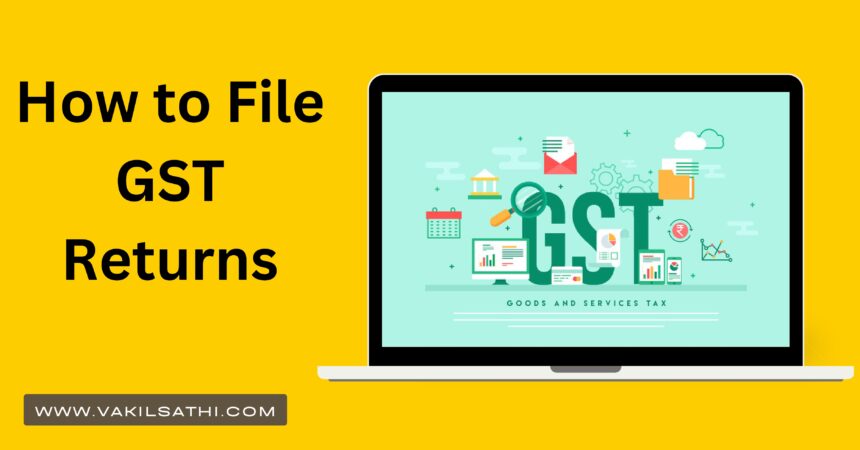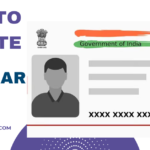The 15-digit GSTIN is structured as follows:
- The first two digits represent the state code ..
- The next ten digits are the PAN of the taxpayer.
- The thirteenth digit indicates the number of registrations an entity has within a state for the same PAN.
- The fourteenth digit is by default “Z.”
- The fifteenth digit is a checksum digit for error detection.
Businesses and individuals with a turnover exceeding the specified threshold are required to register for GST and obtain a unique GSTIN. This number is mentioned on invoices, returns, and other documents related to GST transactions. It helps in the identification and verification of registered taxpayers in the GST system.
What is a GST Certificate?
- A GST Certificate is an official document issued by the tax authorities to businesses or individuals registered under the Goods and Services Tax (GST) in India. It serves as proof of GST registration and contains important information about the taxpayer. Here are some key details typically found on a GST Certificate:
- GST Identification Number (GSTIN)
- Name of the taxpayer
- Address of the taxpayer
- Date of registration
- Type of registration (regular, composite, or non-resident)
- Business category
- Signature of the authorised officer
A GST registration service is required for businesses or individuals in India whose aggregate turnover exceeds the prescribed threshold limits as per the Goods and Services Tax (GST) law. The threshold limits may vary for different categories of taxpayers. As of my knowledge cutoff in January 2022, here are the general threshold limits:
- Mandatory GST Registration:
-
- For businesses operating in all states except for special category states (such as the northeastern states), the threshold limit for mandatory GST registration is an aggregate turnover of ₹40 lakhs (₹20 lakhs for special category states) in a financial year.
- Certain categories of businesses, such as e-commerce operators, are required to register for GST irrespective of their turnover.
2.Voluntary GST Registration:
-
- Even if a business’s turnover is below the mandatory threshold, it can choose to voluntarily register for GST. This can be advantageous for businesses looking to avail of input tax credits, participate in interstate trade, or build credibility with suppliers and customers.
Here are some examples of businesses or individuals that may require GST registration:
- Manufacturers, Traders, and Service Providers: Businesses involved in the supply of goods or services, including manufacturers, traders, and service providers, need to register for GST if their turnover exceeds the prescribed limit.
- E-commerce Operators: Businesses operating as e-commerce platforms or online marketplaces, regardless of their turnover, are required to register for GST.
- Interstate Sellers: Businesses involved in the supply of goods or services across state borders are required to register for GST, irrespective of their turnover.
- Casual Taxable Persons: Individuals or businesses that occasionally undertake transactions that are liable to be taxed under GST need to register as casual taxable persons.
- Non-Resident Taxable Persons: Non-resident individuals or businesses providing taxable goods or services in India need to register as non-resident taxable persons.
- Input Service Distributors: Businesses that receive invoices for input services and distribute the credit of GST paid on these services to their branches or units need to register as Input Service Distributors.
It’s important for businesses to assess their turnover and understand the specific conditions that require GST registration. Professional advice or the assistance of a GST registration service can be valuable in ensuring compliance with GST regulations and avoiding penalties for non-registration.
A Comprehensive Guide on How to File GST Registration:
Goods and Services Tax (GST) registration is a crucial step for businesses operating in India. It is mandatory for businesses with a certain turnover to register for GST. This article will guide you through the step-by-step process of filing GST registration to ensure compliance with the tax regulations.
- Determine Eligibility: Before initiating the GST registration process, ensure that your business meets the eligibility criteria. Businesses with an aggregate turnover exceeding the prescribed threshold must register for GST.
- Gather Documents: Collect the necessary documents, including PAN card, Aadhaar card, proof of business registration, address proof, bank statements, and photographs of the business owner.
- Online Application: To the visit official GST portal (gst.gov.in) and navigate to the ‘Services’ tab.
- Click on ‘Registration’ and then ‘New Registration.’ Fill in the required details in the GST REG-01 form.
- Part A of Form GST REG-01:
- Provide your PAN, mobile number, and email address.
- Receive an OTP on the registered mobile number and email for verification.
- Once verified, you’ll receive a Temporary Reference Number (TRN).
- Part B of Form GST REG-01:
- Log in again using the TRN and the OTP received.
- Complete the application by providing business details, promoter/partner details, and additional information.
- Upload the required documents.
- Verification:
- After submitting the application, the GST officer will review the information.
- If any additional documents are needed, you may receive a notice for the same.
- The officer may also conduct a physical verification of the business premises.
- GST Registration Certificate:
- Once the application is approved, a GST registration certificate (GST REG-06) will be issued.
- This certificate contains the Goods and Services Tax Identification Number (GSTIN).
- Post-Registration Compliance:
- Display the GST certificate prominently at the place of business.
- File regular GST returns as per the prescribed timelines.
- Maintain accurate records of sales and purchases.
- Penalties for Non-Compliance:
- The Failure to register for GST can result in penalties and legal consequences.
- Ensure the timely compliance with GST regulations to avoid penalties.
- Seek Professional Assistance:
- If you find the process challenging, consider seeking professional assistance from a Chartered Accountant or a GST consultant.
GST LOGIN?
you can easy to gst login https://services.gst.gov.in/services/login.
The Filing for GST registration is a critical aspect of business compliance in India. By following this step-by-step guide, businesses can navigate the process smoothly, ensuring adherence to GST regulations and avoiding any potential penalties. Stay informed, maintain accurate records, and consult professionals when needed to facilitate a seamless GST registration process.







